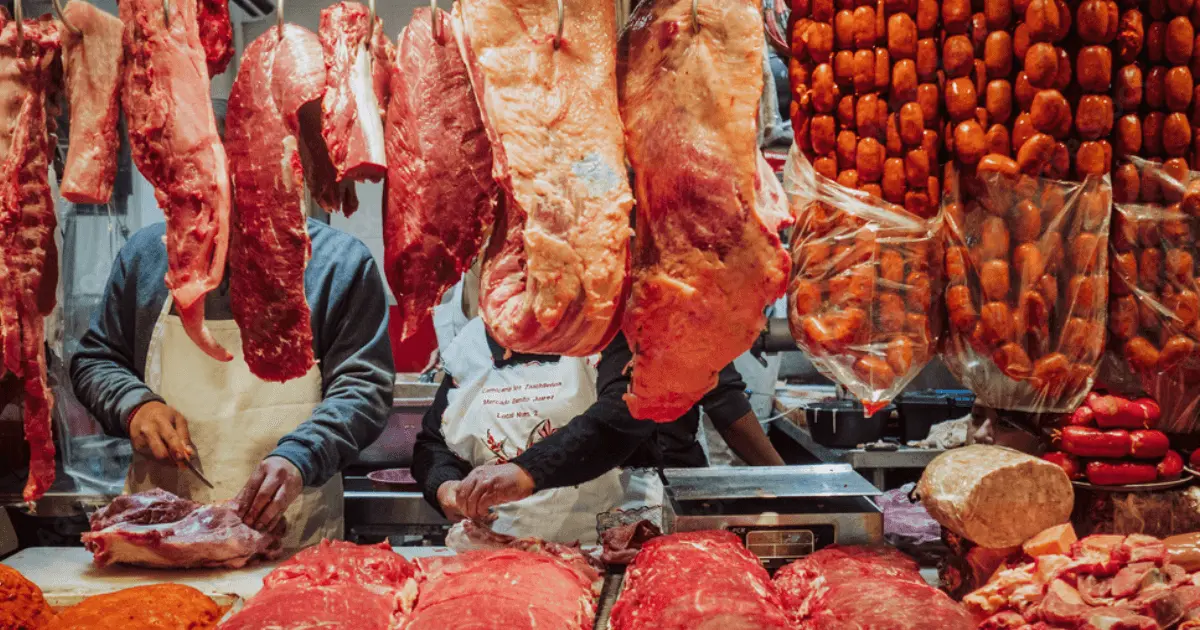Reveal the Art of the Butcher's Cut in a Modern Meat Market
In the ever-evolving landscape of contemporary meat markets, the butcher's cut has transcended its standard roots, merging age-old craftsmanship with contemporary techniques. What genuinely establishes the contemporary butcher apart is their ability to forge a much deeper connection between consumers and the beginnings of their meat.
Evolution of Butchery Strategies

The mid-20th century saw butchery techniques further improved by clinical insights into muscular tissue biology and meat aging, improving both tenderness and taste. Innovations like vacuum cleaner product packaging and refrigeration prolonged product shelf-life, permitting butchers to expand offerings and boost quality assurance. This duration likewise marked the surge of specific equipment, such as band saws and meat slicers, which increased accuracy and effectiveness in meat processing.
Digital systems now help in tracking animal provenance and maximizing cuts to satisfy specific consumer preferences. Furthermore, a resurgence in artisanal butchery has arised, blending standard abilities with contemporary knowledge to cater to customers looking for ethical and lasting meat alternatives.

Understanding Meat Cuts

Comprehending the ins and outs of meat cuts is crucial for both butchers and customers seeking high quality and value. Each cut originates from a various part of the animal, passing on unique tastes, appearances, and food preparation methods. Mastery of these differences not only enhances cooking experiences however likewise makes the most of the utility of each carcass. For butchers, specific cuts mirror skill and respect for the craft, guaranteeing minimal waste and optimum return.
The primary groups of meat cuts include primitive, sub-primal, and retail cuts. Butchers then damage these down even more right into sub-primal cuts, before lastly producing retail cuts offered to customers, like ribeye or tenderloin.
Understanding muscle mass composition is crucial; muscle mass made use of more often by the pet tend to be tougher and are best matched for slow cooking approaches, while less-used muscles, like those discovered in the loin, are extra tender and ideal for barbecuing or roasting. Knowledge with these differences empowers consumers to make enlightened choices, improving their cooking undertakings.
Selecting Quality Meat
Selecting the ideal meat entails more than simply choosing a visually attractive piece from the display. The art of selecting quality meat requires a discerning eye and knowledge of specific attributes that signify freshness and quality. To start with, focus on the shade; beef ought to have a brilliant, cherry-red tone, while lamb must display a soft pink tone, and pork a pale pink. This indicates the meat is fresh and hasn't been exposed to oxygen for also lengthy.
Secondly, consider the marbling, which describes the white flecks of fat within the muscular tissue. Appropriate marbling is a key indication of tenderness and flavor, as it thaws during food preparation, improving the meat's juiciness. Remember, higher marbling frequently associates with superior quality cuts, such as USDA Prime.
Texture is an additional critical aspect; meat should really feel firm to the touch, not slimed or overly soft. In addition, bear in mind the aroma. Fresh meat must have a tidy, neutral smell, without any type of sour or repulsive odors.
Matching Cuts With Food Preparation Methods
Effectively pairing cuts of meat with the proper food preparation methods is necessary for achieving ideal flavor and structure. Various cuts vary in tenderness, marbling, and connective cells web content, each requiring certain strategies to unlock their capacity. For instance, tender cuts like filet mignon and ribeye, with their intrinsic marbling, advantage from high-heat, quick-cooking methods such as grilling or pan-searing. These methods improve the meat's natural tastes and make certain a juicy finish.
Conversely, tougher cuts like brisket and chuck roast are rich in collagen, which damages down into gelatin when cooked slowly. These cuts are perfect i was reading this for braising or slow roasting, enabling the meat to tenderize in time and create deep, intricate tastes. Cuts such as brief ribs and pork shoulder make out well with slow-cooking techniques, where prolonged cooking times image source transform their robust appearances right into succulent meals.
Lamb shanks and oxtail, which require prolonged cooking to soften, are best candidates for stewing or slow-moving simmering. These approaches coax out abundant, hearty flavors while preserving moisture. By understanding the one-of-a-kind features of each cut, cooks and home cooks alike can boost their cooking developments, making sure each dish is both pleasing and remarkable.
The Butcher's Function Today
Navigating the evolving landscape of the contemporary meat market, the butcher's function today prolongs beyond mere prep work of cuts. Contemporary butchers are cooking craftsmens, educators, and supporters for sustainable techniques.
In enhancement to crafting accurate cuts, butchers currently engage straight with customers, using cooking guidance and customizing options to fit specific needs and preferences. Their know-how in meat aging, marbling, and taste profiles encourages customers to make educated choices, boosting their culinary experiences. This individualized solution exemplifies the butcher's developing duty as a trusted advisor in the kitchen area.
In addition, butchers are pivotal in lessening waste, making use of entire animals to create diverse items such as sausages and supplies - bagley farms meat market edwardsville il. This thorough approach not only appreciates the pet however Clicking Here additionally straightens with contemporary sustainability goals. In this method, the contemporary butcher personifies both practice and innovation, adapting to an ever-changing market while preserving the artistry and stability of their craft

Verdict
The modern butcher's craft elaborately weaves traditional strategies with contemporary developments, emphasizing lasting methods and ethical sourcing. Proficiency in comprehending diverse meat cuts and top quality signs empowers butchers to give educated recommendations, straightening particular cuts with optimum cooking techniques. This proficiency not only boosts culinary experiences yet also reinforces the connection in between consumers and the beginnings of their food. By honoring historic practices while welcoming contemporary needs, the butcher's role stays vital in today's advanced meat market.